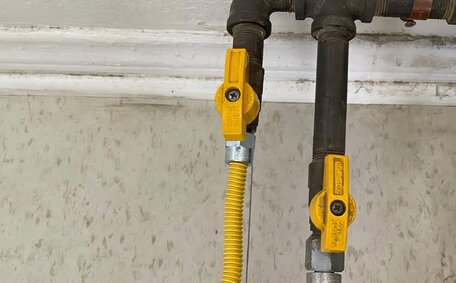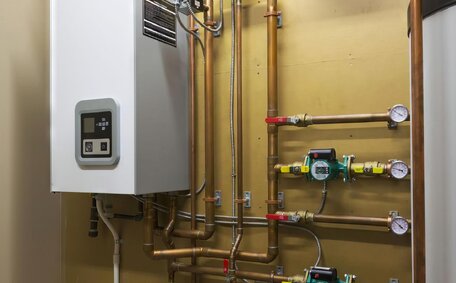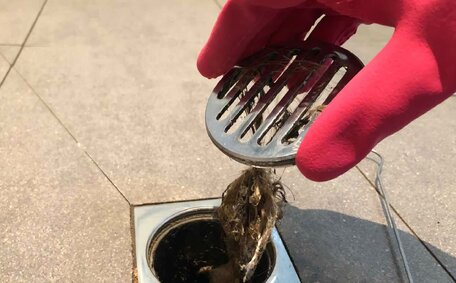What is pipe relining and why consider it?
Pipe relining, a trenchless repair method, refurbishes pipes without excavation. This technique inserts a resin-coated liner into the damaged pipe, which is then cured in place, forming a strong new inner surface.
Several advantages make relining a preferable choice over complete pipe replacement for homeowners:
- Cost savings - Relining is often cheaper than full replacement since it doesn’t require extensive excavation or landscaping work.
- Convenience - The process is swift, often completed within hours, and minimally disruptive, potentially reducing the amount of any insured damage.
- Sustainability - Relining makes use of the existing pipe infrastructure, which has been in place, thus reducing waste and the demand for new materials.
- Effectiveness - With proper application, current techniques can prolong the lifespan of pipes by over half a century.
In some cases, pipe relining could be applied to ageing or deteriorated water pipes, root intrusions in your sewer line, leaky joints, or corrosion damage.
Does standard home insurance cover pipe relining?
Unfortunately, homeowners insurance usually does not cover pipe relining procedures. This preventative repair, similar to routine maintenance, is typically not included in standard policies.
Homeowners insurance is designed to protect against sudden and unforeseeable events such as acts of God, fires, storms, and floods; However, your homeowners insurance policy may not encompass coverage for the gradual wear and tear of pipes over time, which usually fall beyond the scope of your standard policy coverage.
However, if damage to your sewer line arises from a covered event, separate from normal wear and tear, your policy might provide coverage:
- Plumbing leaks and their subsequent damages caused by perils such as frost, affecting your dwelling’s walls or floors, or other parts, are sometimes included under some policies for pipe relining, typically categorised within dwelling coverage.
- If tree roots invade your pipes and lead to blockages, your insurance might cover the damage, depending on your policy’s specifics on such issues.
It’s wise to thoroughly check your insurance policy to understand the coverage, especially regarding other structures and exclusions like wear and tear, pests, or earth settling. You should attentively review your grasp of the sewer system coverage included in your house insurance, and importantly, understand the exclusions regarding sewer matters to prepare for proactive measures.
While relining may not be covered by default, certain conditions could warrant coverage after discussing with your insurer.
Available endorsements that can expand coverage
Although standard homeowner’s insurance covers unexpected plumbing issues, it often leaves homeowners questioning whether preventative actions such as pipe relining are included. Fortunately, adding endorsements can include water and sewer lines in your coverage.
Two of the most comprehensive insurance policies include coverage for sewer issues, ensuring drains covered home instances:
- Sewer backup endorsements - These endorsements protect against sewer line issues that impact the water supply, like backups and pipe damage. Coverage typically ranges from $3,000-$10,000 for cleanup, repairs, and possible loss-of-use expenses like temporary housing if necessary.
- Service line coverage - With limits from $4,000-$10,000, this endorsement covers repairs to damaged underground water line that connect your home to the main utility lines. Some insurers bundle water and sewer lines together under one add-on.
Key questions to ask your insurance provider
When reviewing your policy, discuss these key questions with your insurance provider to clarify details regarding pipe relining and sewer line coverage:
- Does my policy cover gradual wear and tear issues that may require pipe relining?
- What specific perils or causes of damage does your homeowner’s sewer/drain line coverage protect against (e.g. tree roots, corrosion, freezing, etc.)?
- If I have a backup endorsement, how much would be the dollar limit and what would the terms of coverage entail?
- If damage arises and relining is suggested, what documentation will be necessary to substantiate your claim with your insurance?
- Is pipe relining ever covered as a preventative measure if issues are detected but no actual property damages or losses have occurred yet?
- Are there any inspection requirements to qualify for relining coverage under my policy?
Definitive answers from your insurer can clarify exact coverages and elaborate on sewer-specific details relevant to potential pipe relining needs.
Proactive maintenance to prevent pipe issues
Adopting a regular maintenance routine for your plumbing system can ensure incidents are covered your policy before evolving into costly complications down the track. Here are some key maintenance tips to keep your pipes and sewer lines running smoothly for years:
- Inspect pipes annually - Regularly inspecting exposed pipes for signs of water damage or corrosion and using a camera to examine hidden underground pipes can prevent severe issues.
- Clear tree roots - Invasive tree roots can cause blocked drain and significant infrastructure harm, often leading to a blocked drain. Regularly trim tree roots yearly to prevent blockages.
- Clean fixtures/drains - Use drain cleaners monthly and a biennial professional hydro jetting service to prevent hair and soap residue buildup.
- Repair minor leaks early - Even a minor water leak can damage your plumbing and culminate in substantial problems as time progresses. Repair leaks can exacerbate quickly, so attend to drips immediately before more extensive relining is required.
- Install backflow valves - Professionally installed backflow prevention devices are critical to prevent flood-related sewage overflows, safeguarding sanitation and protecting your water heater systems.
- Upgrade old plumbing - Replace corroded galvanised or cast iron pipes with a durable flexi hose, including those connected to your hot water system, with longer-lasting and environmentally safe PEX or copper.
Diligent maintenance can markedly decrease the likelihood of significant plumbing malfunctions, which are often foreshadowed by obvious signs of water distress.
Our skilled team can help ensure that your plumbing services remain operational effectively for years to come, and we’ll clarify whether insurance covers sewer maintenance under certain conditions. Contact your local experts to discuss your system.
When to call a professional plumber
It is recommended to hire a professional plumber when pipe issues become intricate, hazardous, or necessitate specialised equipment and skills for diagnosis and repair.
Signs it’s time to contact a pro include when the normal wear and tear begin to cause blocked or erratic performance in your plumbing system.
- Major water leaks causing extensive water damage
- Backed up or entirely clogged drains
- Sewage odours originating from drains or your toilet
- Low water pressure despite thorough pipe inspections
- Frequent occurrences of the most common plumbing problem
- Significant pipe corrosion found during inspection
- Major flooding from pipes or water-using appliances
- Gas leaks suspected in pipes
Our certified plumbers expertly assess problems and develop the best course of action, from repair to replacement, particularly after sewer line damage. We can also provide documentation and evidence to help you able find out if your insurance claim is substantiated if relevant.
For minor leaks or occasional clogs around your home, understanding the fine print of DIY maintenance may suffice. However, it is prudent to enlist professional help to address any damage, thus avoiding the aggravation of preventable damage to your home.
Feel free to contact our team whenever plumbing issues exceed your capacity to handle. Call Jannali Plumbing on 1300 349 338 or email us for reliable local service in the Sydney area.






